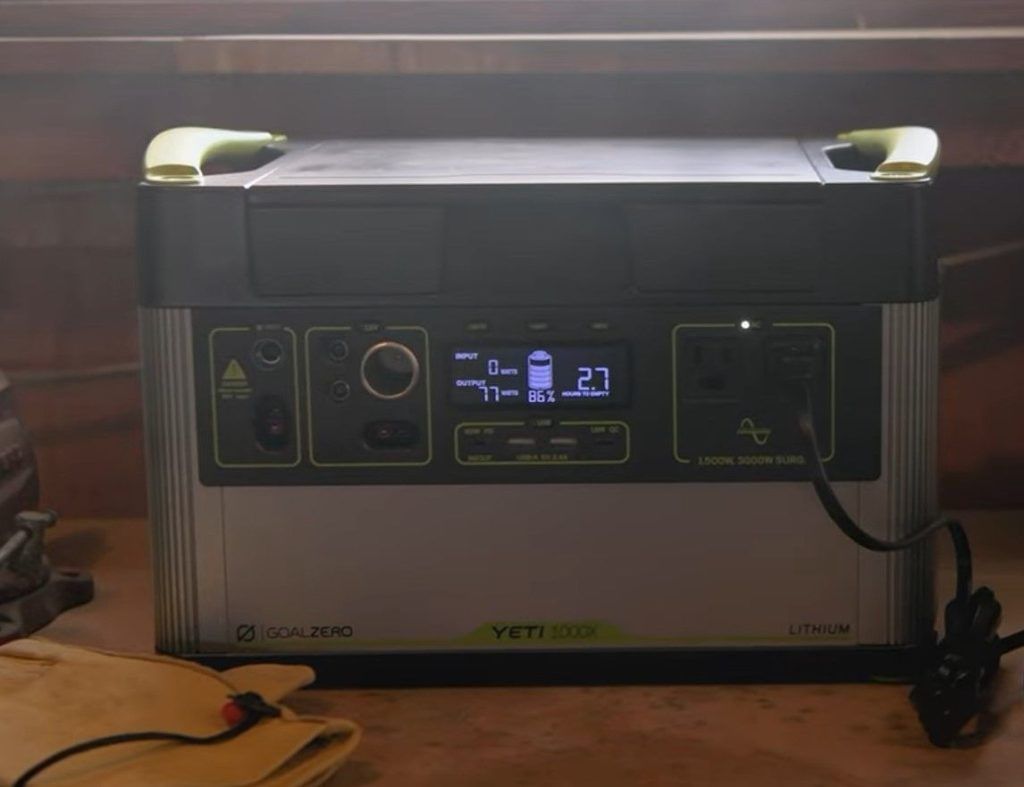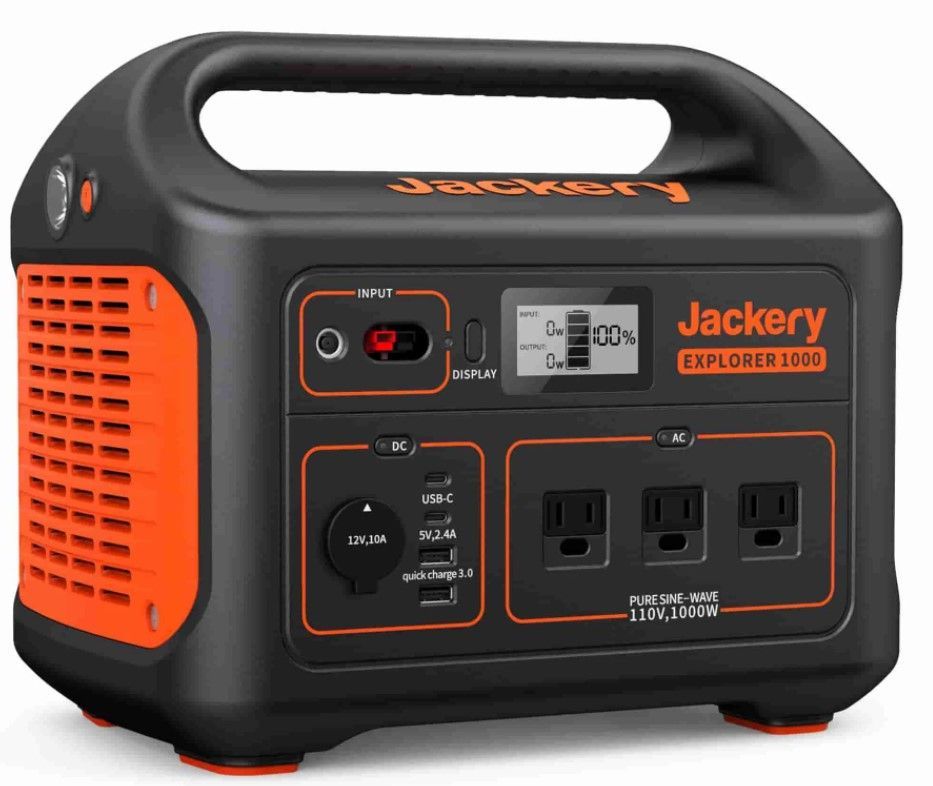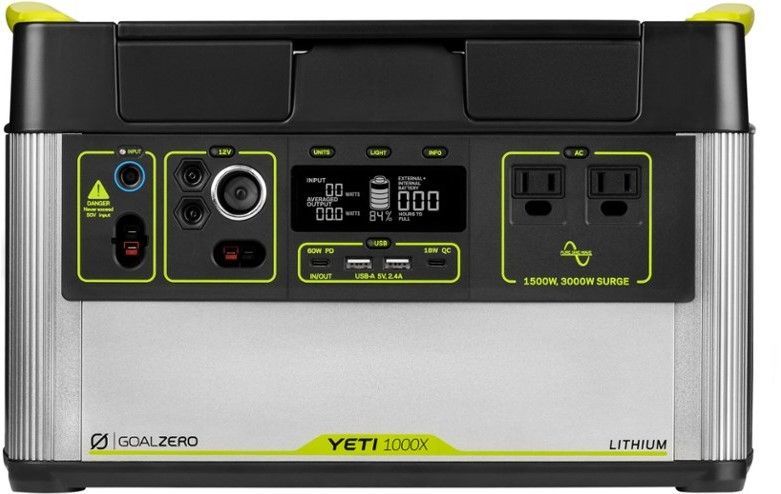Jackery Explorer 1000 Vs Goal Zero Yeti 1000X Review – Which is Better?

Jackery and Goal Zero have been competing for the top spot in the portable power station industry for years. Their Explorer 1000 and Yeti 1000X have taken this competition up to another level with their outstanding power outputs, battery timings, and many other features.
In summary, the Jackery Explorer 1000 is a better option if you’re looking for a lightweight yet reasonably powerful portable power station at a great price. This model weighs 9.7lbs lighter than the Yeti 1000x and is significantly cheaper. Yet it offers a similar power output. However, the Yeti 1000X is a better option if power is your primary concern. It has more powerful AC ports and also comes with a quicker charging ability.
Let’s have a detailed overview of both these portable power stations.
*The Wild Guides is reader-supported. When you buy through links on my site, I may earn an affiliate commission at no extra cost to you. Learn more*
Jackery Explorer 1000 Vs Goal Zero Yeti 1000X– Comparison

Here’s how both these portable power stations compare with each other
Design and Weight
- Winner: Jackery Explorer 1000 (lightweight and compact)
The Jackery Explorer 1000 weighs 22 lbs with the battery pack. It has a sleek-looking control panel containing the display and various ports. These include 1x USB-C, 2x USB-A, 3x AC, and 1x DC ports. A sturdy handle makes it a cinch to carry, and three rubber feet stabilize it on uneven surfaces.
Despite offering the same power output, the Yeti 1000X weighs heavier than the Explorer 1000, at just under 32 pounds. Its control panel has a classic look to it, with two AC ports on the right side and multiple USB-A and one USB-C port beneath the LED display.
Also, while the Explorer 1000 has a single carry handle going from left to right, the Yeti 1000 has two of them, one on each side. This was a good decision on Goal Zero’s part – this model’s extra weight will require most people to carry it with both hands.
Compatible Solar Chargers
- Winner: Goal Zero Yeti 1000X (charges quickly)
Jackery offers three solar panels in its SolarSaga series. These include SolarSaga 60W, 100W, and 200W. It recommends using the 100W for juicing up Explorer 1000. Placed under full sunlight, four of these solar panels could take the Explorer 1000 from 0 to 100 percent charging in 16 hours.
The Yeti 1000X takes less time for complete charging.
Goal Zero insists that only one 200W Solar Panel can completely charge this model within 6 hours, almost 10 hours fewer than the time Explorer 1000 needs for full charging off of a solar panel. So if you are always in a hurry, the Yeti 1000X might be a better bet.
Battery
- Winner: It’s a tie
The Explorer 1000 comes with a 1,002Wh Lithium-ion battery. One that can retain up to 80% of its charging capacity for the first 500 cycles. Six output ports, three of which are AC ports, meaning the battery can supply power to quite a few devices at one time.
As for the Yeti 1000X, it comes in with a 983Wh battery. An MPPT charge controller means the battery is pre-optimized for solar charging (something which you also get with the Explorer 1000). The battery’s lifecycle is the same as that of the Explorer 1000’s.

Surge Capacity
- Winner: Goal Zero Yeti 1000X (higher surge capacity)
The Explorer 1000 comes in with a 2,000W surge capacity. A unit’s surge capacity indicates the maximum power it can offer for a few seconds. It comes in handy for heavy-duty appliances. These devices need more power to wake up into life, after which their power needs reduce.
Conflicting reports exist about the surge capacity of Yeti 1000X.
Some users claim that its AC ports can output as much as 3,000W of power for a few seconds. Others put the number at 2,400. Regardless of the number you believe, one thing is clear: the Yeti 1000X has a bigger surge capacity than Explorer 1000, meaning it can juice up more powerful appliances.
Charging Options and Time
- Winner: Goal Zero Yeti 1000X (takes less time to go from zero to a hundred percent charging)
The Explorer 1000 offers three recharging options. These include an AC wall outlet, four SolarSaga 100W solar panels, and a 12V car adapter. The charging times are different for each option.
- AC Wall Outlet: 7 hours
- Solar Panel: 16 hours with four SolarSaga 100W
- 12 V Car Adapter: 14 hours
While it offers the same number of charging options, the Yeti 1000X takes less time to go from zero to a hundred percent charging. Here are the estimated charging times.
- AC Wall Outlet: 9 hours
- Solar Panel: 6 hours with 200W Solar Panel
- 12 V Car Adapter: 9 hours
Number of output ports
- Winner: Goal Zero Yeti 1000X
The Jackery Explorer comes with 5 output ports. These include one USB-C port, three AC ports, and two USB-A ports.
The Yeti 1000X takes the lead on this count. It offers 7 output ports, including two USB-A ports, 1 USB-C port, 2x AC ports, 1 QC (quick-charging), and 1 PD port.

Expansion
- Winner: Goal Zero Yeti 1000X
Goal Zero Yeti 1000X takes the lead on this count.
Unlike the Explorer 1000, which cannot be daisy-chained, you can daisy chain the Yeti 1000X to a system of lead-acid batteries. Put simply, you can expand the Yeti 1000X’s capacity.
Warranty
- Winner: It’s a tie
Both these portable power stations are warrantied for two years.
Price
- Winner: Jackery Explorer 1000
On their official websites, the Explorer 1000 and Yeti 1000X are available for $1,099 and $1,499, respectively.
Jackery Explorer 1000 Vs Goal Zero Yeti 1000X – Final Verdict
In conclusion, here’s how the results for Jackery Explorer 1000 vs Goal Zero Yeti 1000X stack up:
- Weight and build: Explorer 1000 is the lighter of the two
- Number of Ports: Yeti 1000X has more ports
- Battery and Surge Capacity: Yeti 1000X has a bigger surge capacity
- Warranty: Tie.
- Price: Jackery Explorer 1000 is a more cost-effective option.
Portable power station guides
Use this table to find out all the reviews I made about the best portable power stations in the industry.


